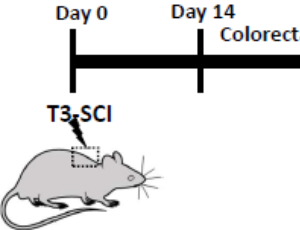Loading
Journal of Neurobiology and Physiology
ISSN: 2692-546X


Paul Ashwood
Professor
University of California , USA
Featured Article
Endoplasmic reticulum stress and mitochondrial dysfunctions in metal-induced neurological pathology

Featured Article
Allosteric interactions among voltage-sensor modules of sodium channels probed by scorpion toxin modifiers

Featured Article
Duration and magnitude of bidirectional fluctuation in blood pressure: the link between cerebrovascular dysfunction and cognitive impairment following spinal cord injury

About this Journal
Journal of Neurobiology and Physiology is an international, multidisciplinary open access, peer-reviewed journal that publishes groundbreaking novel research articles, comprehensive review articles, short commentary, case reports, and editorials written by leading researchers in the field of neurology and neuroscience.
Articles
Evaluation of chondrocyte dedifferentiation mechanisms using confocal Raman microscopy
Human chondrocytes were isolated from articular cartilage harvested from a patient's knee during surgery, following informed consent. Cells were enzymatically digested with collagenase, then expanded directly onto Calcium Fluoride (CaF2) slides in two-dimensional (2D) monolayer cultures. Evaluations using wide-field optical microscopy, as well as Raman spectral measurements at D7, D14, D21, and D28 were performed for each passage from P1 to P4.
Commentary on “Understanding bacterial chondronecrosis with osteomyelitis (BCO) in poultry: Highlights from proteomic analyses and imaging techniques”
Bacterial chondronecrosis with osteomyelitis (BCO) is a leading cause of lameness in broiler chickens, which results in financial losses due to mortality and reduced growth. Due to the nature of the condition, it raises animal welfare and food safety concerns as well. The pathology in the commercial setting is derived from a combination of weak bone and bacterial translocation and infection.
The genetical genomic path to understanding why rats and humans consume too much alcohol
At the invitation of the Journal, we are providing a summary of our published work that has followed the publication in 2009 of our manuscript entitled “Genetical Genomic Determinants of Alcohol Consumption in Rats and Humans”. Our initial premise, which has been maintained throughout, is that knowledge regarding gene transcription would greatly enhance GWAS of alcohol-related phenotypes.
Commentary on “Identification of CD19 as a shared biomarker via PPARγ/β-catenin/Wnt3a pathway linking psoriasis and major depressive disorder”
This study presents a comprehensive exploration into the shared molecular mechanisms linking psoriasis and major depressive disorder (MDD), two conditions that are increasingly recognized as having potential comorbidities. It offers new insights into the immune and genetic pathways that may contribute to both disorders, emphasizing the potential of CD19 as a biomarker and therapeutic target through the PPARγ/β-catenin/Wnt3a signaling pathway.
Allosteric interactions among voltage-sensor modules of sodium channels probed by scorpion toxin modifiers
Gating of voltage-dependent sodium channels involves coordinated movements of the voltage sensors in the voltage-sensing modules (VSMs) of the four domains (DI-DIV) in response to membrane depolarization. Zhu et al. have recently examined the effects of charge reversal substitutions at the VSM of domain III on the action of scorpion alpha- and beta-toxins that intercept the voltage sensors in domains IV and II, respectively.
Endoplasmic reticulum stress and mitochondrial dysfunctions in metal-induced neurological pathology
Although essential metal ions are required in the body, neurotoxicity occurs when exposed to a concentration of metal that the body cannot accommodate. In the case of non-essential metals which are important in industry, these elements have the property of causing neurotoxicity even at small concentrations. When such neurotoxicity progresses chronically, it can contribute to various neurodegenerative disorders, such as Alzheimer’s disease and Parkinson’s disease.
Duration and magnitude of bidirectional fluctuation in blood pressure: the link between cerebrovascular dysfunction and cognitive impairment following spinal cord injury
Individuals with spinal cord injury (SCI) have a significantly increased risk for cognitive impairment that is associated with cerebrovascular remodeling and endothelial dysfunction. The sub-acute stage following high thoracic SCI is characterized by increased fibrosis and stiffness of cerebral arteries. However, a more prolonged duration after SCI exacerbates cerebrovascular injury by damaging endothelium.
Allosteric interactions among voltage-sensor modules of sodium channels probed by scorpion toxin modifiers
Gating of voltage-dependent sodium channels involves coordinated movements of the voltage sensors in the voltage-sensing modules (VSMs) of the four domains (DI-DIV) in response to membrane depolarization. Zhu et al. have recently examined the effects of charge reversal substitutions at the VSM of domain III on the action of scorpion alpha- and beta-toxins that intercept the voltage sensors in domains IV and II, respectively.
Endoplasmic reticulum stress and mitochondrial dysfunctions in metal-induced neurological pathology
Although essential metal ions are required in the body, neurotoxicity occurs when exposed to a concentration of metal that the body cannot accommodate. In the case of non-essential metals which are important in industry, these elements have the property of causing neurotoxicity even at small concentrations. When such neurotoxicity progresses chronically, it can contribute to various neurodegenerative disorders, such as Alzheimer’s disease and Parkinson’s disease.
Duration and magnitude of bidirectional fluctuation in blood pressure: the link between cerebrovascular dysfunction and cognitive impairment following spinal cord injury
Individuals with spinal cord injury (SCI) have a significantly increased risk for cognitive impairment that is associated with cerebrovascular remodeling and endothelial dysfunction. The sub-acute stage following high thoracic SCI is characterized by increased fibrosis and stiffness of cerebral arteries. However, a more prolonged duration after SCI exacerbates cerebrovascular injury by damaging endothelium.
Allosteric interactions among voltage-sensor modules of sodium channels probed by scorpion toxin modifiers
Gating of voltage-dependent sodium channels involves coordinated movements of the voltage sensors in the voltage-sensing modules (VSMs) of the four domains (DI-DIV) in response to membrane depolarization. Zhu et al. have recently examined the effects of charge reversal substitutions at the VSM of domain III on the action of scorpion alpha- and beta-toxins that intercept the voltage sensors in domains IV and II, respectively.
Endoplasmic reticulum stress and mitochondrial dysfunctions in metal-induced neurological pathology
Although essential metal ions are required in the body, neurotoxicity occurs when exposed to a concentration of metal that the body cannot accommodate. In the case of non-essential metals which are important in industry, these elements have the property of causing neurotoxicity even at small concentrations. When such neurotoxicity progresses chronically, it can contribute to various neurodegenerative disorders, such as Alzheimer’s disease and Parkinson’s disease.
Duration and magnitude of bidirectional fluctuation in blood pressure: the link between cerebrovascular dysfunction and cognitive impairment following spinal cord injury
Individuals with spinal cord injury (SCI) have a significantly increased risk for cognitive impairment that is associated with cerebrovascular remodeling and endothelial dysfunction. The sub-acute stage following high thoracic SCI is characterized by increased fibrosis and stiffness of cerebral arteries. However, a more prolonged duration after SCI exacerbates cerebrovascular injury by damaging endothelium.
